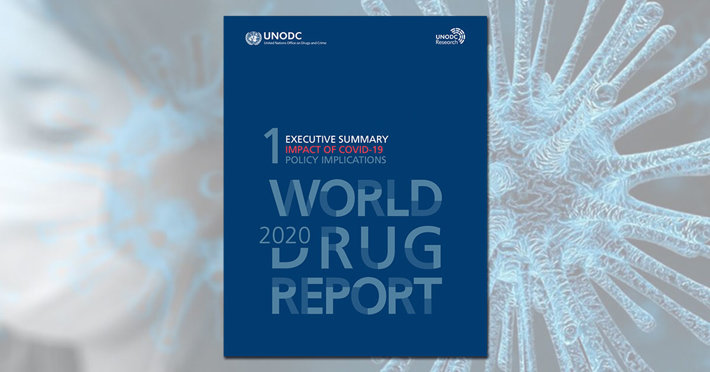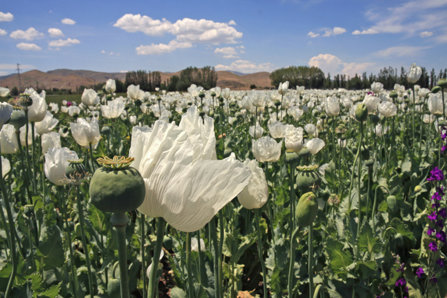What Does the UN’s World Drug Report Tell Us About Addiction?

How is the world changing as it relates to the use of illicit drugs? Have we made any progress? Are more people using drugs or are we getting through to people about the harm done by drug abuse?
Answers to questions like these can be found in the annual World Drug Report published by the United Nations Office on Drugs and Crime. Let’s take a look at whether we have recently gained ground or lost it in the fight against drug abuse and addiction.
This report issued in June 2020 can be found here.
What Are the Numbers?
This report compares the 2009 number of drug users around the world with the number of drug users in 2018.
- In 2009, there were an estimated 210 million illicit drug users or 4.8% of the world’s population
- In 2018, there were an estimated 269 million drug users or 5.3% of the world’s population.
Why did these numbers go up? This report provides insight into a number of factors that may have been at work here.
Population Changes
Of course, the most obvious reason the overall number went up was because of an increase in population. However, the rate of drug use also went up half a percent.
There was a greater increase in drug use among the population in developing countries compared to developed countries. In developing countries, there was a 28% increase in drug use but in developed countries, there was just a 7% increase. One reason for this greater increase was that there is a faster growth of a young population in developing countries. Teens and young adults routinely have a higher rate of drug use.

Another reason for this change is the migration of many people from rural areas to urban areas. There is more availability of drugs in urban areas and the rate of use is generally higher.
COVID-Related Production Problems
Historically, when the 2008 international economic crisis hit, many patterns of drug manufacture, transport and use shifted in response. We already know that some of the current patterns of manufacture and trafficking have been changing in response to the international COVID-19 emergency. Over time, we will be able to see these patterns more completely.
For example, there are now fewer domestic and international flights. This means that drug shipments normally carried on bodies or in luggage now have to be sent by some other means. More shipments in seaborne containers have recently been detected, especially those traveling from South America directly to Europe. This type of transport enables larger quantities to be shipped at one time.
Synthetic drugs are the ones most likely to be strapped to bodies, so their trafficking may be more disrupted than other types of drugs. Cocaine has long gone by sea and heroin mostly travels by land so they have been less affected.
COVID-19 Related Economic Problems
This report often uses the experience of the 2008 economic crisis to analyze and understand the changes we are likely to see. For example, the report notes that in past economic crises, rising unemployment numbers were linked to increased drug abuse. Of course, in 2020, many people were out of work—either furloughed from their jobs for a while or they lost their jobs entirely.

Changes in Choices of Drugs to Be Manufactured
Two drug categories have seen significant growth in the last few years. One is the drug category called New Psychoactive Substances (NPS). This category includes hundreds of stimulants, sedatives, hallucinogens, dissociatives and synthetic cannabinoids. These drugs do not depend on the success of a marijuana crop in America, an opium poppy crop in Afghanistan or coca plants in the Andes. They are made in labs.
The second category is synthetic opioids. The most famous synthetic opioid is fentanyl, which is actually a family of dozens of chemically-similar drugs. This family includes carfentanil which is 10,000 times more powerful than morphine. It also includes a new synthetic opioid, isotonitazene, a drug so new that not much is known yet about its typical potency.
All these drugs are produced in laboratories in many corners of the world. All that is needed is the right precursor chemicals, which may also be hard to come by because of COVID-19 restrictions.
According to a report from the European Monitoring Centre for Drugs and Drug Addiction (EMCDDA), 2020’s changes in public policies on gatherings and “stay-at-home” measures, drug manufacturers were likely to find their usual supplies unavailable. Based on experiences in past disruptions of the drug market, it’s expected that illicit drug supplies would more often suffer from ingredient substitution, dilution, misrepresentation and adulteration.
The EMCDDA also reported that in 2020, nine new synthetic opioids were found on the illicit market, one of them a new fentanyl derivative.
In Colombia, however, there has been no shortage of coca plants. But there has been a shortage of gasoline needed for cocaine production. It’s possible that COVID-19 restrictions have prevented the movement of gasoline supplies from Venezuela to Colombia for this industry.
Changes in Farming Patterns

The UN report notes that COVID 19 restrictions may also be affecting farmers. Because their local authorities may be less able to monitor their crops, many farmers may switch from legitimate farming to illicit crops or increase their acreage dedicated to illicit crops. This shift increases plant-based drug availability.
In an odd and ironic turn of events, the COVID-19 crisis resulted in a shortage of people to drain opium poppies of their potent resins in Afghanistan. This shortage was due to the closure of a border crossing between Pakistan and Afghanistan.
Changes in Drugs Being Consumed
Efforts to restrict the spread of COVID-19 have also limited shipments of precursor chemicals. The UN report cited the example of Mexico’s production of methamphetamine. Illicit labs in Mexico rely on shipments of precursor chemicals that primarily come from East Asia. Shortages of these chemicals have sent methamphetamine prices climbing in the U.S. Those who previously consumed methamphetamine may have had to seek out a cheaper drug.
In Russia, Afghanistan and Iraq, however, the stimulant market including methamphetamine, mephedrone and alpha-PVP has been booming. Afghanistan is now a significant source country for methamphetamine. Global seizures of amphetamine-type stimulants reached a new high in 2018, at 228 ton-equivalents.
Globally, anti-COVID-19 measures have limited opioid supplies. Some people addicted to opioids have switched to other substances, such as alcohol, anti-anxiety drugs or synthetics of the NPS class.
Governmental and Budgetary Limitations
The World Drug Report notes that there may be a decreasing number of cooperative anti-drug operations between countries, a decline noted since 2010. The 2008 economic crisis may have played a role in beginning this decline.
The UN predicts that governmental focus on COVID-19 measures may also reduce drug-related budgets. A reduction in drug prevention activities and interception operations may already have given traffickers more freedom to move their poisonous wares.
Difficulty Accessing Treatment
Those who are addicted and want to stop taking drugs often have a hard time finding treatment where there is an economic crisis, COVID-19 restrictions or not. The UN states that only one in eight addicted people is able to access drug treatment services. For women, the ratio is even worse. While one in three drug users is female, only one in five people receiving drug treatment is female.

COVID-19 restrictions may have further aggravated this problem because lockdown measures may have closed treatment facilities or made some people reluctant to reach out for help at this time.
The Harmful Impact of Drug Abuse
In this area, the statistics are no better. The global burden of harm increased 17% between 2007 and 2018. This harm is measured by calculating the number of healthy years of life lost and the number of premature deaths related to drug use. One aggravating factor in this harm is a steeply increasing loss of health and life due to untreated hepatitis C that can result in liver cancer. Hepatitis C is often spread by the sharing of needles between injecting drug users.
Which Drug Was Used Most Often and Which Was the Most Harmful?
There’s probably no surprise here. The World Drug Report estimates 192 million people consumed cannabis in the prior year. An estimated 58 million used an opioid such as heroin, a prescription painkiller (fake or real) or an illicitly-manufactured opioid. Despite the smaller number of opioid users, this category of drug accounts for 66% of lives lost to drug abuse and half of the years of healthy life lost.
This loss of healthy years of life increased dramatically between 2008 and 2017, most remarkably due to opioid use disorders. While fentanyl is most commonly the culprit in North America, in much of Africa, the primary problem is with the opioid tramadol.
Individuals Who Struggle Economically May Suffer the Most
Around the world, lockdowns have penalized millions of people. Some have lost their jobs, either temporarily or permanently. Nearly 100,000 businesses have permanently closed down, according to Fortune. When income is gone, some people are forced to turn to illicit activities to bring in cash. Others turn to drug abuse or alcohol to dull their misery.
We can look back at the effect of deindustrialization on some American cities several decades ago. When the industry of steel manufacturing began to close down because of global competition in the 1970s and 1980s, the effect on steel-producing communities was dire. One report notes that the effects included “increases in crime both immediately and longterm… increases in suicide, drug and alcohol abuse, family violence and depression.”
As reflected in the United Nations report, COVID-19 is having a similarly destructive effect on our world. We do not seem to be making any headway in fighting drug abuse and saving both lives and families from the effects of drugs. If we are to achieve our goal of saving lives, all nations on this planet must overcome the desire to remain isolated in our activities and further the work cooperatively to prevent drug-related disease and loss of life.
Sources:
- https://wdr.unodc.org/wdr2020/field/WDR20_BOOKLET_1.pdf
- https://www.emcdda.europa.eu/system/files/publications/13464/20205648_TD0320796ENN_PDF_rev.pdf
- https://fortune.com/2020/09/28/covid-buisnesses-shut-down-closed/
- https://abc30.com/pandemic-alcohol-drugs-uc-merced-study-covid-anxiety/10325252/
- https://ysu.edu/center-working-class-studies/social-costs-deindustrialization
Reviewed by Claire Pinelli ICAADC, CCS, LADC, RAS, MCAP, LCDC-I


 ®
®